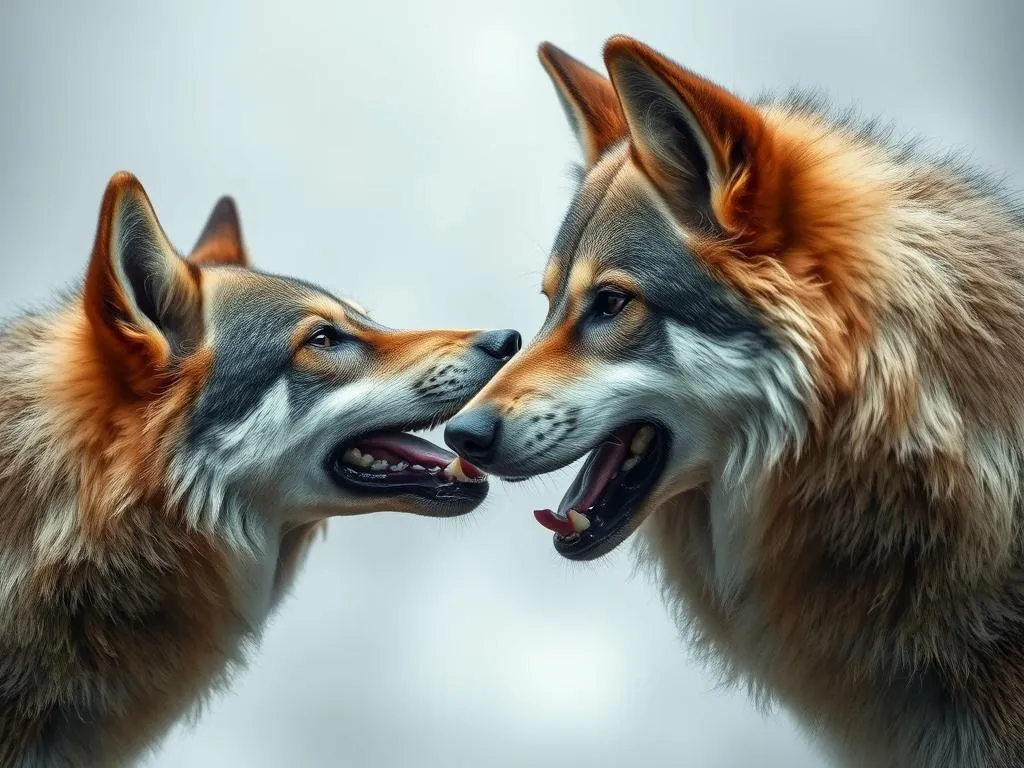
The transformation of wolves into dogs is one of the most fascinating stories of domestication in history. Understanding this transition not only sheds light on the evolution of our four-legged companions but also reflects significant changes in human lifestyles over millennia. This article explores the intricate journey of how wolves became dogs, delving into the driving factors, processes, and the profound impact this transformation has had on both species.
The Ancestral Lineage of Dogs
The Wolf-Dog Connection
At the heart of the wolf-dog connection lies a shared ancestry. Genetic studies indicate that domestic dogs (Canis lupus familiaris) are descendants of gray wolves (Canis lupus), tracing back to a common ancestor that lived around 20,000 to 40,000 years ago. This genetic similarity is not merely superficial; it extends to the basic structure of their DNA. Both species belong to the Canidae family, which highlights their close relationship.
Key Differences Between Wolves and Dogs
Despite their shared lineage, wolves and dogs exhibit remarkable differences.
-
Behavioral Traits: Wolves are naturally more independent and possess strong instincts for hunting and territorial defense. In contrast, dogs have evolved to be more social and reliant on humans, often displaying traits such as loyalty and playfulness.
-
Physical Characteristics: While wolves are typically larger, with powerful builds, dogs come in a variety of shapes and sizes, resulting from selective breeding. This has led to the creation of breeds that are suited for specific purposes, from herding to companionship.
-
Social Structures: Wolves operate within a pack hierarchy that emphasizes survival and cooperation. Dogs, having adapted to human environments, often form bonds with their human families, creating a different social dynamic.
The Process of Domestication
Theories of Domestication
The domestication of wolves into dogs has been the subject of various theories. Two prominent ideas are self-domestication and human-driven domestication.
-
Self-Domestication: This theory suggests that wolves began to adapt to the presence of early human settlements. Those wolves that were less aggressive and more tolerant of humans were more likely to thrive, leading to a gradual transformation into more dog-like behaviors.
-
Human-Driven Domestication: In this view, humans actively selected wolves for traits that were beneficial for companionship, hunting, and protection. This reciprocal relationship fostered the evolution of dogs as an integral part of human communities.
Archaeological Evidence
Archaeological findings provide crucial insights into the timeline of wolf domestication. Sites such as Bonn-Oberkassel in Germany, which dates back to around 14,000 years ago, reveal evidence of human and canine coexistence. Artifacts such as dog remains buried alongside humans suggest a bond that transcended mere utility, hinting at emotional connections between species.
Genetic Studies
Recent advancements in genetic research have illuminated the timeline of domestication. Studies of ancient DNA provide a clearer picture of how genetic variations contributed to the divergence of wolves and dogs. These variations included changes in traits such as size, coat color, and behavior, which were likely influenced by selective pressures from both natural and human environments.
Factors Influencing Domestication
Environmental Changes
The world was changing as humans transitioned from a nomadic lifestyle to settled agricultural communities. This shift had profound implications for both wolves and humans.
-
Impact of Climate Change: As the Ice Age waned, climate changes led to shifts in habitats. Wolves, which once roamed vast territories, found their environments altered, affecting their hunting and social behaviors.
-
Advent of Agriculture: The rise of agriculture created stable food sources for both humans and wolves. This new relationship allowed wolves to scavenge near human settlements, providing them with a reliable food supply while simultaneously assisting humans with protection and hunting.
Human Interaction
Early humans played a crucial role in shaping the behaviors of wolves.
-
Mutual Benefits: The relationship between humans and wolves was symbiotic. Wolves helped humans hunt game, while humans provided food and protection. Over time, this interaction led to behavioral adaptations in wolves, making them more docile and willing to associate with humans.
-
Case Studies: Archaeological evidence from various cultures shows that domesticated canines were used for tasks ranging from hunting to guarding livestock, thus reinforcing their value in human societies.
Selection of Traits
The concept of selective breeding is vital in understanding how wolves became dogs.
-
Desired Traits: Early humans likely selected for traits that enhanced the usefulness of dogs. These included reduced aggression, enhanced social behaviors, and specific skills like herding or tracking.
-
Significance of Selective Breeding: Over generations, humans refined these traits, leading to the diverse array of dog breeds we see today, each tailored for specific human needs and environments.
Evolution of Dog Breeds
Early Dog Breeds
The earliest known dog breeds emerged as humans began to settle into agricultural societies.
-
Overview: Breeds such as the Basenji and the Saluki were likely among the first to develop, serving specific roles in hunting and protection.
-
Connection to Human Activities: These early dogs were integral to human survival, assisting in tasks that ranged from herding livestock to providing companionship, thereby solidifying their status as human allies.
Modern Dog Breeds
The explosion of dog breeds in contemporary society is a testament to the complexities of breeding practices.
-
Diversity of Breeds: Today, there are over 340 recognized dog breeds worldwide, each developed to fulfill specific roles, from working dogs to beloved pets.
-
Health Issues: While selective breeding has created a vast variety of breeds, it has also led to significant health concerns. Many purebred dogs experience genetic disorders due to a limited gene pool, raising questions about the ethics of breeding practices.
Cultural Significance of Dogs
Dogs have woven themselves into the fabric of human culture across the globe.
-
Integral Roles: In numerous societies, dogs are not just pets but also working animals, therapy companions, and family members. Their ability to bond with humans has made them integral to our lifestyles.
-
Modern Societal Roles: From therapy dogs assisting with mental health to service dogs aiding individuals with disabilities, the roles of dogs continue to evolve, demonstrating their enduring significance in human life.
The Impact of Domestication on Wolves and Dogs
Behavioral Changes
The behaviors of domesticated dogs have diverged significantly from those of their wild ancestors.
-
Comparison of Behavior: Dogs exhibit behaviors that promote socialization and cooperation with humans, a stark contrast to the more solitary and survival-driven behaviors of wolves.
-
Socialization and Training: Training has become a crucial aspect of dog ownership, shaping behaviors that align with human expectations and lifestyles.
Conservation Issues
The domestication of wolves has had profound implications for wild wolf populations as well.
-
Impact on Wild Populations: As human settlements expanded, many wolf populations faced habitat loss and persecution. This has led to declining numbers in the wild, highlighting the need for conservation efforts.
-
Conservation Efforts: Protecting wild wolves is essential not only for their survival but also for maintaining ecological balance. Efforts to conserve both dog breeds and their wild relatives emphasize the interconnectedness of these species.
Conclusion
Recap of Key Points
The transformation of wolves into dogs is a complex tale of adaptation, cooperation, and evolution. From their shared ancestry to the profound influence of human interaction, the journey of domestication has shaped the lives of both species in remarkable ways.
The Ongoing Relationship Between Humans and Dogs
As we look to the future, the bond between humans and dogs continues to evolve. Understanding their history enhances our appreciation for these companions and emphasizes the importance of responsible ownership and breed conservation.
Call to Action
As you explore the fascinating world of dogs, consider the rich history that has brought them into our lives. Engage with resources that delve deeper into dog breeds and their unique traits, and support efforts aimed at conserving both dogs and their wild relatives. Embrace the journey of understanding how wolves became dogs, and celebrate the remarkable relationship we share with these incredible animals.









